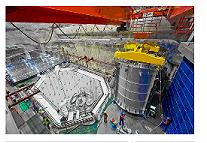
Представлен для публикации в журнале “Progress in Energy and Combustion Science”
Работа подготовлена в Национальной лаборатории США (Lawrence Berkeley National Laboratory)
ABSTRACT
This review examines current approximations and approaches that underlie the evaluation of transport properties for combustion modeling applications. Discussed in the review are: the intermolecular potential and its descriptive molecular parameters; various approaches to evaluating collision integrals; supporting data required for the evaluation of transport properties;
commonly used computer programs for predicting transport properties; the quality of experimental measurements and their importance for validating or rejecting approximations to
property estimation; the interpretation of corresponding states; combination rules that yield pair
molecular potential parameters for unlike species from like species parameters; and mixture approximations. The insensitivity of transport properties to intermolecular forces is noted, especially the non-uniqueness of the supporting potential parameters. Viscosity experiments of
pure substances and binary mixtures measured post 1970 are used to evaluate a number of approximations; the intermediate temperature range 1 < T* < 10, where T* is kT/ε, is emphasized since this is where rich data sets are available. When suitable potential parameters
are used, errors in transport property predictions for pure substances and binary mixtures are less
than 5 %, when they are calculated using the approaches of Kee et al.; Mason, Kestin, and Uribe;
Paul and Warnatz; or Ern and Giovangigli. Recommendations stemming from the review include
(1) revisiting the supporting data required by the various computational approaches, and updating the data sets with accurate potential parameters, dipole moments, and polarizabilities;
(2) characterizing the range of parameter space over which the fit to experimental data is good,
rather than the current practice of reporting only the parameter set that best fits the data; (3) looking for improved combining rules, since existing rules were found to under-predict the viscosity in most cases; (4) performing more transport property measurements for mixtures that include radical species, an important but neglected area; (5) using the TRANLIB approach for treating polar molecules and (6) performing more accurate measurements of the molecular parameters used to evaluate the molecular heat capacity, since it affects thermal conductivity, which is important in predicting flame development.
File TnansProp.pdf.


